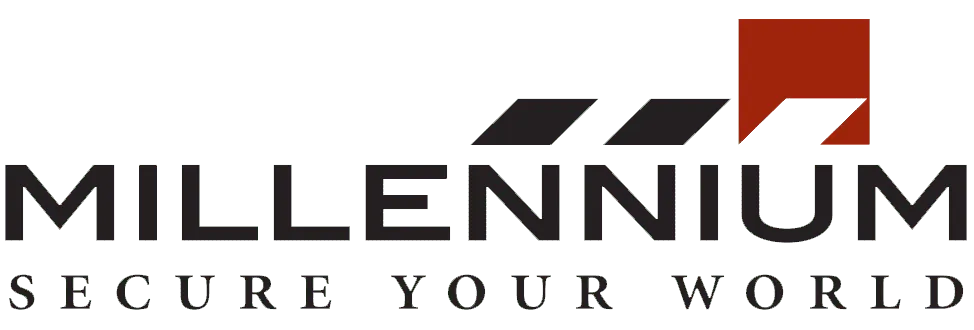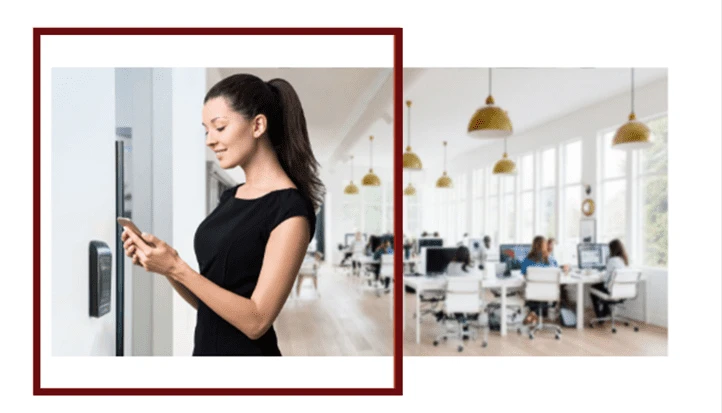Secure the Future with MIFARE Tokens on Campus.

In the dynamic realm of campus management and security, technology stands as a cornerstone, pivotal in ensuring both efficiency and safety. Among the array of technological advancements transforming access control and student identification in university and school campuses, one innovation shines brightly: the Mifare token. Understanding MIFARE Tokens MIFARE tokens are contactless smart cards or key fobs embedded with RFID technology, specifically powered by NXP Semiconductors’ MIFARE chips, which are embedded with encrypted data and can communicate wirelessly with compatible readers. These tokens enable secure and convenient access control, making them ideal for various applications within organizations. Advantages of MIFARE Tokens in Campus Settings Enhanced Security: MIFRAE tokens provide a higher level of security compared to traditional keys or magnetic stripe cards. The encrypted data stored on the tokens reduces the risk of unauthorized access and cloning, thereby safeguarding sensitive areas like dormitories, labs, and administrative offices. Convenient Access Control: With MIFARE tokens, students and staff can access designated areas seamlessly by simply tapping or waving their card near a reader. This eliminates the need for physical keys or manual checks, saving time and improving overall campus flow. Multi-functionality: MIFAREtokens can be programmed for various applications beyond access control. They can serve as campus IDs, library cards, meal cards for cafeterias, and even payment cards for vending machines or campus stores. This consolidation reduces the number of cards a student needs to carry and simplifies campus life. Real-time Tracking: Educational institutions can track the movement of students and staff using MIFARE tokens. This data can be useful for attendance monitoring, ensuring safety during emergencies, and optimizing campus operations. Customizable Features: MIFARE tokens offer flexibility in terms of programming and customization. Campuses can tailor the tokens to meet specific needs such as setting access permissions based on roles or scheduling temporary access for visitors. Cost-effective and Durable: These tokens are cost-effective over time as they reduce the expenses associated with replacing lost keys or reissuing ID cards. Additionally, MIFARE tokens are built to withstand daily wear and tear, making them durable for long-term use. Implementation in University and School Campuses Using MIFARE tokens in educational institutions involves integrating compatible readers and backend systems. Campus security personnel and administrators play a crucial role in configuring access rights, monitoring system performance, and issuing tokens to students and staff. Conclusion In conclusion, Mifare tokens are a game-changer for university and school campuses seeking to modernize their security and administrative systems. With their advanced security features, multi-functionality, and ease of use, Mifare tokens contribute to a safer, more efficient learning environment. As technology continues to evolve, educational institutions will undoubtedly rely on innovative solutions like Mifare tokens to meet the demands of today’s campus management challenges MGI is a scalable, hosted, access control platform that services any type of real estate. Our cloud-based solution allows managers and tenants to efficiently manage their physical security from anywhere while enhancing the experience and driving profitability.
Elevate Your Security: 3 Ways MIFARE Protects Growing Companies.
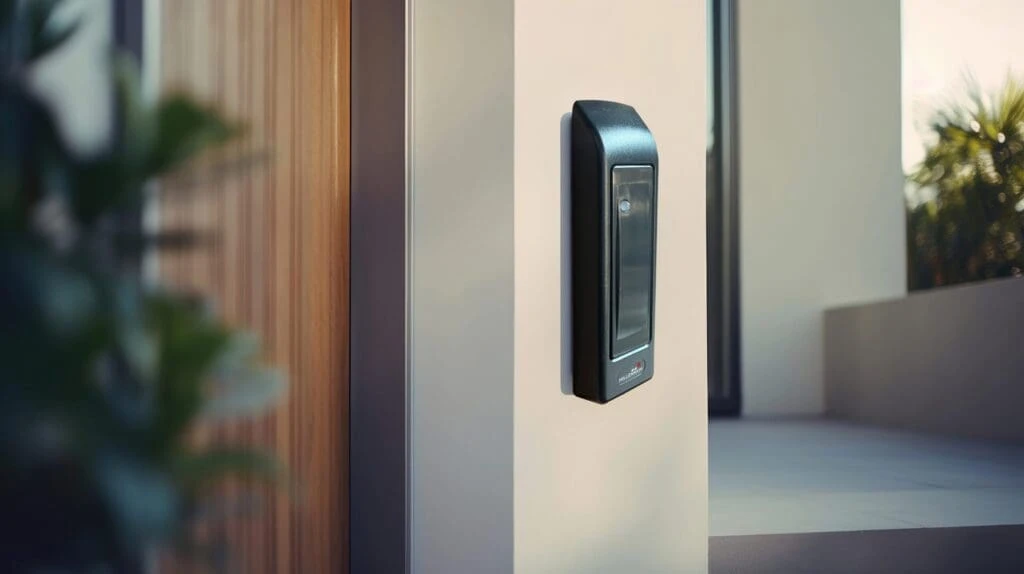
Security and efficiency are key pillars of success, and Mifare tokens help businesses elevate their game. But what exactly are Mifare tokens, and how can they make a difference? explore three ways Mifare tokens improve security and help growing companies run smoothly. Fortified Security Fortress Picture this: your company’s sensitive data, proprietary information, and valuable assets—are protected by a digital fortress impenetrable to would-be intruders. That’s the power of Mifare tokens. With advanced encryption technology and secure authentication protocols, Mifare tokens ensure that only authorized personnel gain access to your company’s premises, networks, and resources. Say goodbye to sleepless nights worrying about data breaches or unauthorized access—Mifare tokens have your back. Streamlined Operations, Seamless Experience Growing companies are like well-oiled machines, with every cog and gear working in perfect harmony. But what happens when one cog gets stuck? Chaos ensues. Mifare tokens act as the lubricant that keeps the machine running smoothly. With their contactless technology and easy-to-use interface, Mifare tokens streamline access control processes, reducing wait times and minimizing friction for employees, visitors, and clients. Whether it’s entering the office, accessing secure areas, or making cashless payments, Mifare tokens deliver a seamless experience that keeps your operations humming along. As your company grows, so do your security needs. But fret not—Mifare tokens are built to scale with you every step of the way. Whether you’re adding new employees, expanding to new locations, or integrating with other systems, Mifare tokens offer the flexibility and versatility to adapt to your evolving requirements. Say goodbye to cumbersome hardware upgrades or costly infrastructure overhauls—Mifare tokens make scalability simple, ensuring that your security infrastructure grows alongside your company. Contact Millennium Group Inc. by requesting a demo today and discover how Mifare tokens can transform your security infrastructure. In conclusion, Mifare tokens are more than just a piece of plastic—they’re a game-changer for growing companies looking to bolster security and streamline operations. With their fortified security features, streamlined user experience, and effortless scalability, Mifare tokens are the secret weapon that empowers businesses to thrive in today’s competitive landscape. So why wait? Elevate your security game with Mifare tokens and watch your company soar. Ready to leap? Let’s secure your success together. MGI is a scalable, hosted, access control platform that services any type of real estate. Our cloud-based solution allows managers and tenants to efficiently manage their physical security from anywhere while enhancing the experience and driving profitability.
Unlocking Security: Why you Need to Choose MIFARE Tokens for Keyfobs Over Proximity Cards
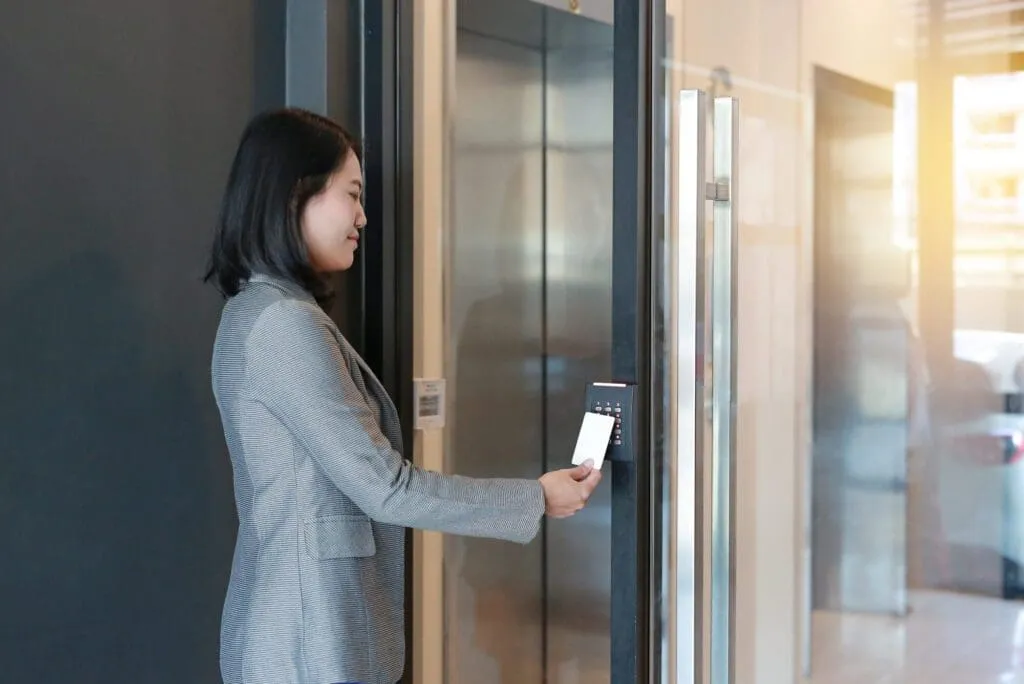
In access control, the choice of technology can significantly impact security, efficiency, and overall user experience. Whether safeguarding sensitive information or ensuring the safety of personnel and assets, having a robust access control system is essential. While proximity keyfobs have been a popular choice for many, there’s a compelling argument for transitioning to Mifare tokens for enhanced security and convenience. At Millennium Group Inc., we advocate for this innovative approach, and here’s why we believe you should make the switch. Firstly, Mifare tokens offer advanced encryption capabilities compared to traditional proximity keyfobs. With built-in AES encryption, Mifare tokens provide an extra layer of protection against unauthorized access and cloning attempts. This ensures that only authorized individuals can gain entry, mitigating the risk of security breaches and enhancing overall system integrity. Moreover, Mifare tokens boast greater versatility and functionality. Unlike proximity keyfobs, which typically have limited storage capacity, Mifare tokens can store a wealth of information, including access credentials, user data, and even financial transactions. This versatility opens up many possibilities, from integrating access control with other systems to facilitating secure payments and transactions within the organization. Additionally, Mifare tokens offer improved convenience and ease of use. With their contactless technology, users can effortlessly gain access with a simple tap or swipe, eliminating the need for physical insertion or contact with the reader. This not only speeds up the entry process but also reduces wear and tear on the access control system, leading to fewer maintenance issues and greater reliability over time. One of the key advantages of Mifare tokens is their versatility and flexibility. These tokens can store a wide range of information, including access credentials, biometric data, and even financial transactions, making them suitable for various applications beyond traditional access control. By leveraging Mifare tokens for keyfobs, organizations can streamline operations, simplify user authentication processes, and enable seamless integration with other systems such as time and attendance tracking or cashless payment solutions. Furthermore, Mifare tokens are highly scalable and future-proof. As technology continues to advance, having a flexible and adaptable access control solution becomes increasingly important. Mifare tokens provide the scalability to accommodate future expansions and upgrades, ensuring that your access control system remains relevant and effective in the long run. At Millennium Group Inc, we believe that access control is more than just a necessity—it’s an opportunity to elevate security, efficiency, and user experience. By embracing innovative solutions like MIFARE tokens for keyfobs, organizations can unlock a new level of control. By making the switch, you can future-proof your security infrastructure, streamline operations, and enjoy peace of mind knowing that your assets and personnel are protected by the latest advancements in access control technology. Millennium Group has several opportunities to help you change what you have to MIFARE. Contact Millennium Group Inc. by requesting a demo today and discover how Mifare tokens can transform your security infrastructure MGI is a scalable, hosted, access control platform that services any type of real estate. Our cloud-based solution allows managers and tenants to efficiently manage their physical security from anywhere while enhancing the experience and driving profitability.
Secure Spaces With Millennium Access Control And Visitor Management

In an era where security is paramount, businesses and organizations are constantly seeking advanced solutions to safeguard their spaces. One such indispensable tool is the integration of Millennium Access Control and Visitor Management systems, a dynamic duo that promises not just security, but peace of mind. Security is not just a necessity; it’s a foundation for trust and productivity. Whether it’s an office building, residential complex, or any public space, ensuring the safety of individuals and assets is paramount. Traditional security measures often need to catch up in the face of evolving threats, making it imperative to adopt advanced solutions The Foundation of Security: Millennium Access Control Modern Technology at Your Fingertips Millennium Access Control leverages cutting-edge technology to provide a robust foundation for security. Through advanced authentication methods, biometric recognition, and smart card systems, access is granted only to authorized individuals. This not only enhances the overall security posture but also streamlines the entry process. Real-time Monitoring and Reporting One of the key features of Millennium Access Control is its real-time monitoring capabilities. Security personnel can monitor access points, track movement within the premises, and receive instant alerts for any suspicious activities. This proactive approach enables swift responses to potential security threats. Integration for Seamless Operations Millennium Access Control is designed with integration in mind. It seamlessly integrates with other security systems, such as CCTV cameras and alarm systems, creating a cohesive security infrastructure. This interconnected approach ensures that all components work together harmoniously to provide comprehensive protection. Elevating Security with Visitor Management Precision in Guest Authentication Visitor Management takes security a step further by offering precise control over guest access. The system captures essential visitor information and validates their identity before granting entry. This meticulous authentication process ensures that only authorized individuals gain access to the premises. Efficient Check-in and Check-out Processes Gone are the days of cumbersome paper logbooks. Visitor Management streamlines the check-in and check-out processes, enhancing efficiency and minimizing wait times. The system maintains a digital record of visitor activity, making it easy to retrieve historical data when needed. Enhanced Emergency Preparedness In times of emergencies, every second counts. Visitor Management contributes to enhanced emergency preparedness by providing accurate information about the number and location of visitors within the facility. This knowledge empowers security teams to respond swiftly and effectively during critical situations. The Future of Secure Spaces Millennium Access Control and Visitor Management mark a paradigm shift in how we approach security. By leveraging advanced technology, streamlined processes, and real-time monitoring, these systems ensure that spaces remain secure without compromising on efficiency. The integration of these solutions creates a robust security ecosystem, setting a new standard for secure living and working environments. In conclusion, when it comes to securing spaces, the combination of Millennium Access Control and Visitor Management is unparalleled. It’s not just about controlling access; it’s about creating an environment where safety is non-negotiable. As we continue to embrace technological advancements, these solutions pave the way for a future where secure spaces are the norm, not the exception. MGI is a scalable, hosted, access control platform that services any type of real estate. Our cloud-based solution allows managers and tenants to efficiently manage their physical security from anywhere while enhancing the experience and driving profitability.
Rising to New Heights: Elevators and Why Millennium Elevator Access Control Takes the Lead
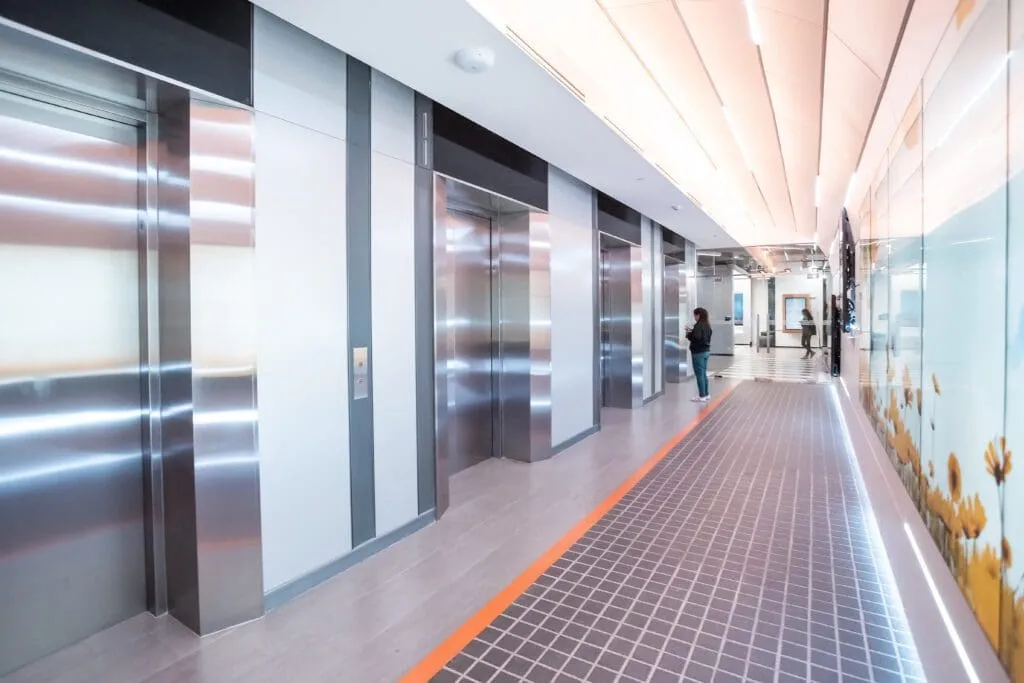
Elevators – those vertical movers that seamlessly transport us between floors, often overlooked but undeniably essential in our daily lives. In this blog, we’ll delve into the reasons elevators are crucial and explore why the Millennium Elevator Access Control stands out as a smart choice for enhanced security. The Elevator Advantage Elevators have become synonymous with modern convenience, effortlessly transporting us between floors with a simple push of a button. In bustling office buildings, residential complexes, and shopping centers, elevators streamline accessibility, making spaces more inclusive for people of all abilities. The time saved by elevators compared to stairs is invaluable, especially in our fast-paced lives. Besides being a convenience master, elevators are crucial for safety reasons. In the case of emergencies or medical issues, elevators provide a swift exit or entrance without the physical strain of stairs. They’re like the silent guardians of high-rises, ensuring everyone can move around effortlessly while maintaining safety standards. Why Elevators Matter: Accessibility: Elevators make spaces accessible to everyone, regardless of physical abilities. They promote inclusivity by ensuring that individuals with mobility challenges can navigate buildings effortlessly. Efficiency: Elevators save time and energy, providing a swift and efficient mode of transportation within multi-story structures. This is particularly crucial in busy environments where every minute counts. Safety: Elevators are designed with safety features to prevent accidents and ensure the well-being of passengers. With proper maintenance, elevators are among the safest modes of transportation. Now, let’s talk about why your elevator experience can reach new heights with Millennium Elevator Access Control. Imagine having the power to regulate and secure elevator access seamlessly. It’s not just about going up and down; it’s about doing it intelligently Automated Precision: Millennium Elevator Access Control takes the reins, ensuring that your elevator is not just a people-mover but a smart entity. With the ability to regulate the number of individuals in each elevator, the system ensures a comfortable and safe experience. It automatically manages the number of passengers, preventing that awkward “can you squeeze in?” scenario and unnecessary delays. Enhanced Security Measures: We’re not just talking about going up; we’re talking about going up safely. Millennium Elevator Access Control goes beyond conventional security measures. It actively monitors and manages access, providing a secure environment within elevators. This is particularly crucial in busy office buildings or high-security facilities. With advanced security features, our Elevator Access Control ensures that only authorized individuals have the golden ticket to the elevator party Seamless Integration: One of the standout features is its seamless integration capabilities. The system effortlessly blends into the existing infrastructure, minimizing disruptions during installation while maximizing security benefits. In a nutshell, elevators are more than just a means of transportation; they are integral to creating functional and accessible spaces. Choosing the right elevator access control system is equally important. With its innovative features, the Millennium Elevator Access Control emerges as a smart choice, ensuring not just mobility but also security in our vertical journeys. Elevate your space with Millennium – the pinnacle of intelligent elevator access control. MGI is a scalable, hosted, access control platform that services any type of real estate. Our cloud-based solution allows managers and tenants to efficiently manage their physical security from anywhere while enhancing the experience and driving profitability.
Reducing the Need for Security Guards with Access Control can Result in Better Operations while also Reducing Overall Costs

In an era of rapid technological advancements, businesses are continually seeking innovative solutions to enhance security while optimizing operational costs. Traditionally, businesses have heavily relied on security personnel to monitor and safeguard their premises. While security guards play a crucial role, they come with inherent limitations such as human error, fatigue, and the inability to be omnipresent. Access control systems address these limitations by reducing the need for security guards through introducing automation, technology, and a proactive approach to security. In this blog, we explore the strategic transition from relying solely on security guards to integrating access control solutions, demonstrating how businesses can boost efficiency, maintain robust security, and realize substantial cost savings. The Limitations of Traditional Security. Limited Coverage & Inability to Monitor 24/7: Traditional security guards can only be present in one location at a time, making it challenging to provide comprehensive coverage for large or multi-facility enterprises. Also, security guards typically work in shifts, leading to gaps in surveillance during non-working hours. This limitation leaves certain areas vulnerable to unauthorized access or security breaches during guard transitions or breaks. Human Error: Security guards are susceptible to human error, such as lapses in attention, fatigue, or oversight. These factors can compromise the effectiveness of security measures and create opportunities for unauthorized individuals to exploit vulnerabilities. Scalability Challenges: As companies grow or expand their facilities, scaling security personnel to match the increased demands becomes logistically and economically challenging. Traditional security guard models may struggle to adapt to the evolving needs of a growing organization. Response Time: While security guards play a critical role in responding to security incidents, their physical presence may not be sufficient for immediate intervention. Depending on the size of the premises, the time it takes for a security guard to reach the location of an incident can be a critical factor, especially in emergencies. Making the Transition: Key Considerations Access Control provides a multi-layered security approach, utilizing biometric authentication, smart card integration, and mobile credentialing. By adopting such advanced measures, businesses not only deter potential threats but also demonstrate a commitment to robust security. Before transitioning to Access Control systems, several key considerations come to the forefront. Comprehensive Risk Assessment: Before implementing access control solutions, businesses should conduct a thorough risk assessment to identify potential vulnerabilities and determine the most effective system configurations. Employee Training: A smooth transition to access control systems requires comprehensive employee training. Personnel should be well-versed in using the new technology and understand the importance of adhering to security protocols. As businesses navigate the evolving landscape of security solutions, the shift from relying solely on security guards to integrating access control systems proves to be a strategic move. By leveraging technology to reduce the need for security guards, businesses can enhance surveillance, minimize human error, optimize costs, and achieve a delicate balance between robust security and operational efficiency. Embracing access control is not merely a cost-cutting measure; it’s a strategic investment in the future of security that aligns with the demands of the modern business world. When it comes to securing your premises, Millennium Access Control stands as your reliable partner. With a commitment to excellence, cutting-edge technology, and a tailored approach to your security needs, we ensure that your access control system remains committed to meeting our customers’ challenges. Trust in Millennium for a security solution that stands strong in helping our dealers and end users have a system they can evolve. Interested in a demo? Click here
From Security to Savings: How Access Control Reshapes Company Insurance Rates

In the ever-evolving landscape of business, security remains a paramount concern. Beyond the physical protection of assets, companies must navigate the intricacies of safeguarding sensitive data, adhering to regulatory standards, and mitigating the risk of liability. One potent tool for reducing company insurance rates is the implementation of smart access control systems. By implementing robust access control measures, businesses can not only enhance security but also pave the way for significant reductions in company insurance rates. Key Benefits of Smart Access Control Systems Access control has evolved from conventional lock-and-key methods to sophisticated systems that offer heightened security, accountability, and adaptability. Enhanced Security Measures: Smart access control systems with biometric authentication, smart card integration, and mobile credentialing significantly and CCTV can help bolster security. By adopting these advanced technologies, businesses can helpstop unauthorized access attempts, reducing the likelihood of security breaches. Customizable Access Levels: Tailoring access permissions based on job roles ensures that employees only have access to areas pertinent to their responsibilities. This granularity minimizes the risk of internal threats and streamlines security management. Audit Trail for Accountability: A detailed audit trail of access events provides a comprehensive overview of who accessed specific areas and when. This not only enhances accountability within the organization but also serves as a valuable tool for investigations and compliance audits. The Insurance-Access Control Insurance providers evaluate various factors when determining premiums, and the level of security within a company is a crucial consideration. By implementing access control systems, businesses demonstrate a commitment to mitigating risks, which can positively influence insurance providers. Here’s how access control contributes to reducing company insurance rates: Preventing Unauthorized Access: Access control systems restrict entry to designated personnel, minimizing the risk of unauthorized individuals entering sensitive areas. This proactive measure can mitigate potential incidents, such as theft, vandalism, or industrial espionage, which insurance companies take into account when calculating premiums. Real-time Monitoring and Reporting: Advanced access control systems provide real-time monitoring capabilities, allowing companies to track and log every access attempt. In the event of an incident, this data becomes invaluable for investigations and insurance claims. The ability to promptly respond to and report incidents can position a company as a lower risk, resulting in potential premium reductions. Integration with Surveillance Systems: Combining access control with surveillance systems creates a comprehensive security network. Insurance providers often look favorably upon companies with integrated security solutions, as they demonstrate a proactive approach to risk management. Compliance with Industry Standards: Many industries have specific security and compliance standards that businesses must adhere to. Implementing access control not only helps meet these standards but also showcases a commitment to maintaining a secure environment. Insurance companies may offer reduced premiums to businesses that comply with industry regulations. Smart access control systems, such as enterprise solution and mobile credentialing, are not just security upgrades; they are strategic investments with the potential for significant cost savings. By lowering the risk of security incidents, affirming dedication to best practices, and enhancing overall security posture, businesses can negotiate more favorable insurance rates, creating a pathway to sustained success in the dynamic business landscape. As companies continue to adapt to emerging challenges, embracing advanced security measures becomes not just a choice but a vital component of a resilient and forward-thinking business strategy. Here are three questions to ask your insurance company if you are getting a rate reduction because you have a smart access control company. What certificates can my company provide you about our access control system to realize a rate reduction ? Does a rate reduction for an access control system apply to all types of insurance policies and if not what policy change would we need to make? What specific documentation do you need to validate our system? When it comes to securing your premises, Millennium Access Control stands as your reliable partner. With a commitment to excellence, cutting-edge technology, and a tailored approach to your security needs, we ensure that your access control system remains committed to meeting our customers challenges. Trust in Millennium for a security solution that stands strong in helping our dealers and end users have a system they can evolve. Interested in a demo? Click here
A Closer Look at Facial Recognition: Security and Beyond
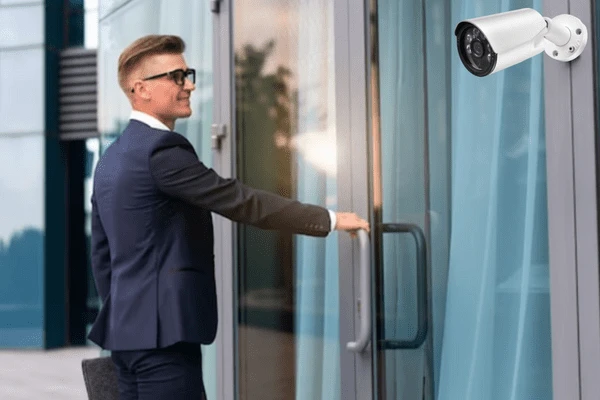
In the ever-changing realm of security technology, Millennium Access Control is dedicated to staying current with emerging trends. Our focus on innovation ensures that we possess the capability to deliver exceptional access control solutions. We take pride in the integration of facial recognition into our comprehensive suite of features. This blog is a deep dive into the importance of facial recognition when used in the proper settings to enhance the access control system. The Power of Facial Recognition in Access Control: 1. Unparalleled Biometric Precision: Facial recognition adds a new dimension to biometric security. By analyzing unique facial features, this technology provides unparalleled precision in identity verification. 2. Enhanced Access Control Customization: Our access control systems, now equipped with facial recognition, offer a heightened level of customization. Tailor access permissions based on facial biometrics for areas that require extra security that a physical credential can’t ensure. 3. Rapid and Contactless Authentication: In an era that values speed and hygiene, facial recognition excels. The process is swift and contactless, contributing to a seamless user experience. This feature is particularly advantageous in places where high traffic and quick access are crucial. 4. Heightened Security in Sensitive Environments: Certain settings, such as data centers, research facilities, and government institutions, demand an extra layer of security. Facial recognition provides an added shield, ensuring that only authorized individuals gain access to classified or sensitive areas. Applications Across Diverse Environments: 1. Corporate Spaces: In corporate environments, where data protection and restricted access are paramount, facial recognition elevates security measures. It minimizes the risk of unauthorized entry and enhances overall control. 2. Healthcare Facilities: In healthcare settings, protecting sensitive patient information and securing restricted zones are critical. Facial recognition adds a robust layer of identity verification, bolstering security measures in hospitals and clinics. 3. Government Facilities: Government institutions in certain high level security. Facial recognition plays a pivotal role in ensuring that only authorized personnel gain access such as documents and data rooms. Embracing Facial Recognition in Access Control: At Millennium Access Control, we are proud to embrace the power of facial recognition within our access control systems. This strategic integration shows our dedication to delivering cutting-edge solutions that align with the dynamic requirements of diverse industries. Contact Millennium Today: Ready to explore the transformative potential of facial recognition in your security infrastructure? Contact Millennium Access Control to request a demo and learn more about how our integrated solutions can elevate security in your unique setting.
Back-to-School Security: A Guide to Access Control Success

As the back-to-school season approaches, the focus on safety and security becomes paramount for educational institutions. Access control systems play a pivotal role in creating a secure environment, providing not only peace of mind for administrators but also ensuring the safety and well-being of students, faculty, and staff. In this blog, we’ll explore the ways in which access control contributes to a safe and efficient return to school. 1. Tailored Security Solutions for Educational Institutions: The unique requirements of schools demand tailored security solutions. Access control systems can be customized to fit the specific needs of each educational facility, whether it’s a K-12 school, college, or university. 2. Controlled Access to Campus Facilities: Access control enables educational institutions to regulate and monitor access to various campus facilities. From classrooms and laboratories to administrative offices, administrators can define and manage access permissions based on roles and responsibilities. 3. Enhanced Visitor Management: With the influx of parents, visitors, and contractors during the back-to-school period, visitor management becomes crucial. Access control systems provide a streamlined approach to visitor identification, ensuring that only authorized individuals have access to designated areas. 4. Time-Sensitive Access: Implementing time-sensitive access control allows schools to define specific timeframes for access permissions. This feature is particularly beneficial for after-school activities, events, and facilities that should only be accessible during certain hours. 5. Integration with Student Information Systems: Seamless integration with student information systems enhances security by ensuring that access permissions align with the current enrollment status of students. This integration streamlines the onboarding and offboarding process, keeping access control up-to-date. 6. Emergency Lockdown Protocols: Access control systems offer the capability to initiate emergency lockdown protocols swiftly. In the event of a security threat, administrators can quickly secure the entire campus or specific areas to ensure the safety of everyone on site. 7. Mobile Credential Solutions: Embrace the convenience and security of mobile credential solutions. Students and staff can use their smartphones as access credentials, reducing the need for physical cards and enhancing the overall access control experience. 8. Comprehensive Audit Trails: Access control systems maintain detailed audit trails, providing administrators with insights into who accessed specific areas and when. This feature is invaluable for post-incident analysis, compliance, and accountability. As schools prepare for back-to-school season, the implementation of robust access control systems is a proactive step toward creating a secure and conducive learning environment. The combination of tailored security solutions, controlled access, and advanced features ensures that educational institutions are well-equipped to address safety concerns and focus on fostering a positive educational experience. Millennium’s Commitment to Safeguarding Students & Institutions As students embark on a new academic year, safety remains our top priority at Millennium Group Inc. Our tailored security solutions, encompassing controlled access, advanced visitor management, and time-sensitive permissions, contribute to the creation of a secure and conducive learning environment. With integrated emergency lockdown protocols, mobile credential solutions, and comprehensive audit trails, we ensure that educational institutions are equipped to address safety concerns effectively. At Millennium, we understand the unique security needs of schools. Contact us to discover how our cutting-edge access control solutions can fortify your institution, providing peace of mind for administrators and ensuring the safety and well-being of students, faculty, and staff. Here’s to a successful and secure academic year ahead!
Bolting Down Weather-Ready Security: Navigating Storms with Millennium

In the Southeast, where electrical storms are a force to be reckoned with, businesses must be vigilant in protecting their premises against the unpredictable nature of these storms. Electrical storms can wreak havoc on security systems, leading to vulnerabilities that can be exploited by unauthorized individuals. In this blog, we’ll delve into the specific challenges posed by electrical storms and explore the crucial elements that ensure your security system remains resilient in the face of such weather, emphasizing how Millennium Access Control provides the ultimate solution for weather-ready security. Understanding the Impact of Electrical Storms on Security Systems: Power Surges and Outages: Electrical storms often bring power surges and outages, posing a significant threat to security systems. Sudden fluctuations in power can damage sensitive electronic components, leading to system failures and potential security breaches. Equipment Vulnerability: The risk of equipment damage during electrical storms is heightened. Without adequate protection, security hardware, including access control panels and cameras, becomes susceptible to permanent damage, compromising the overall security infrastructure. Key Components of a Weather-Ready Security System: Battery Backups: One of the critical elements in weather-ready security is a robust battery backup system. In the event of a power outage, battery backups kick in seamlessly, ensuring uninterrupted operation and safeguarding against data loss or system shutdowns. Line Conditioners: Line conditioners play a crucial role in stabilizing power supply. By smoothing out voltage irregularities, line conditioners protect security system components from damage caused by sudden spikes or drops in electrical voltage. Power Supplies: Having a visible voltage meter on the power supply provides real-time insights into the electrical conditions. This allows for proactive monitoring, enabling timely responses to voltage fluctuations and ensuring the security system remains operational. The Millennium Advantage: A Weather-Ready Security System: Millennium Access Control understands the unique challenges posed by electrical storms in the Southeast. Our weather-ready security systems are designed to not only withstand but thrive in adverse weather conditions. Battery Backup Excellence: Millennium’s access control solutions are equipped with state-of-the-art battery backup systems, ensuring that your security remains intact even during power outages. Uninterrupted protection is our commitment to your peace of mind. Line Conditioner Integration: Our access control systems integrate advanced line conditioners, providing a stable and consistent power supply to protect against voltage irregularities. Your security is fortified, regardless of the storm’s intensity. Visible Voltage Meter: Millennium goes the extra mile by incorporating visible voltage meters on our power supplies. This transparency empowers users to monitor the electrical conditions actively, allowing for immediate action in response to any voltage fluctuations. Choose Millennium Access Control for Weather-Ready Security: When it comes to securing your premises against the challenges posed by electrical storms, Millennium Access Control stands as your reliable partner. With a commitment to excellence, cutting-edge technology, and a tailored approach to your security needs, we ensure that your access control system remains weather-ready, providing unwavering protection regardless of the storm’s fury. Trust in Millennium for a security solution that stands strong in the face of nature’s unpredictability. Your safety, our priority.
